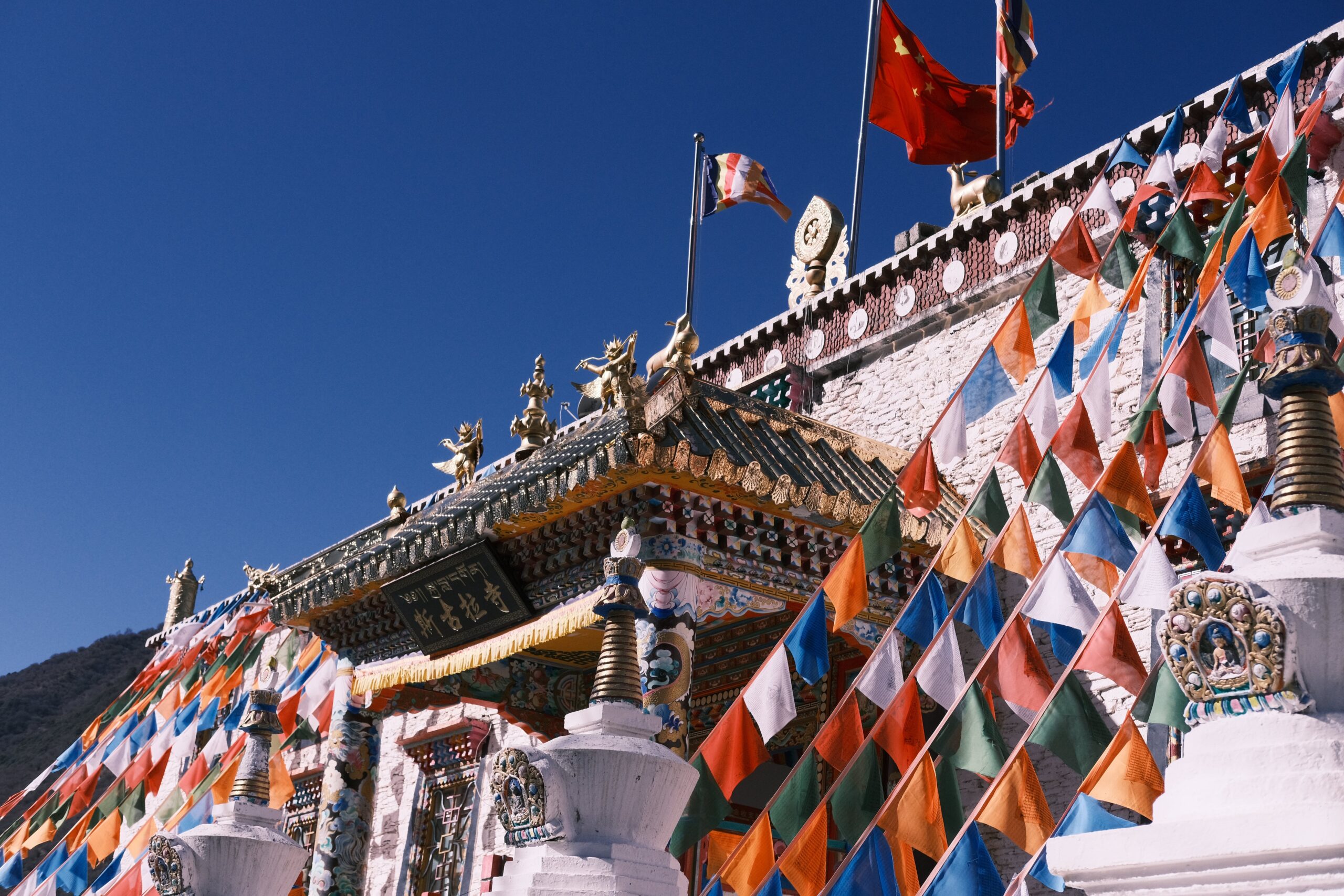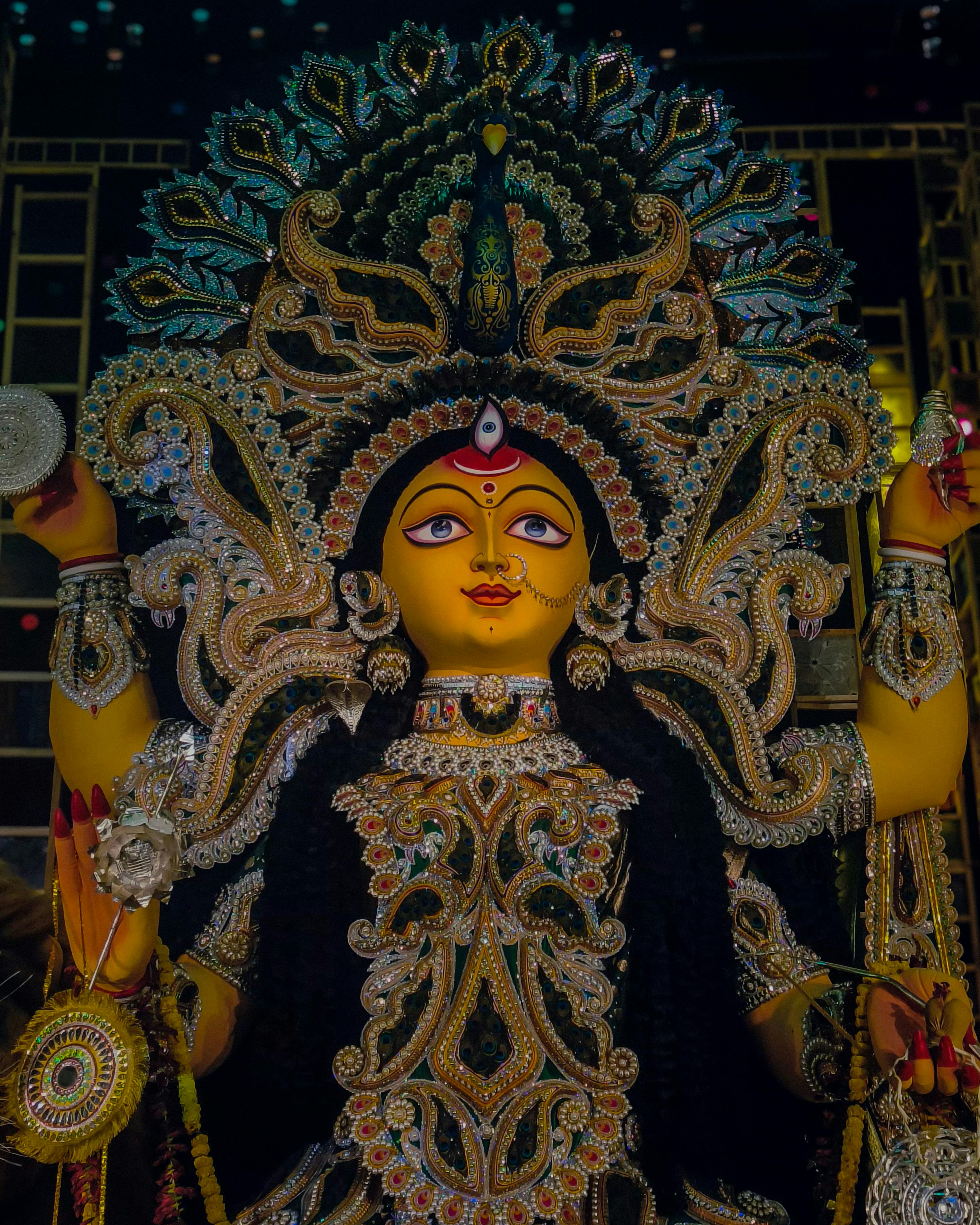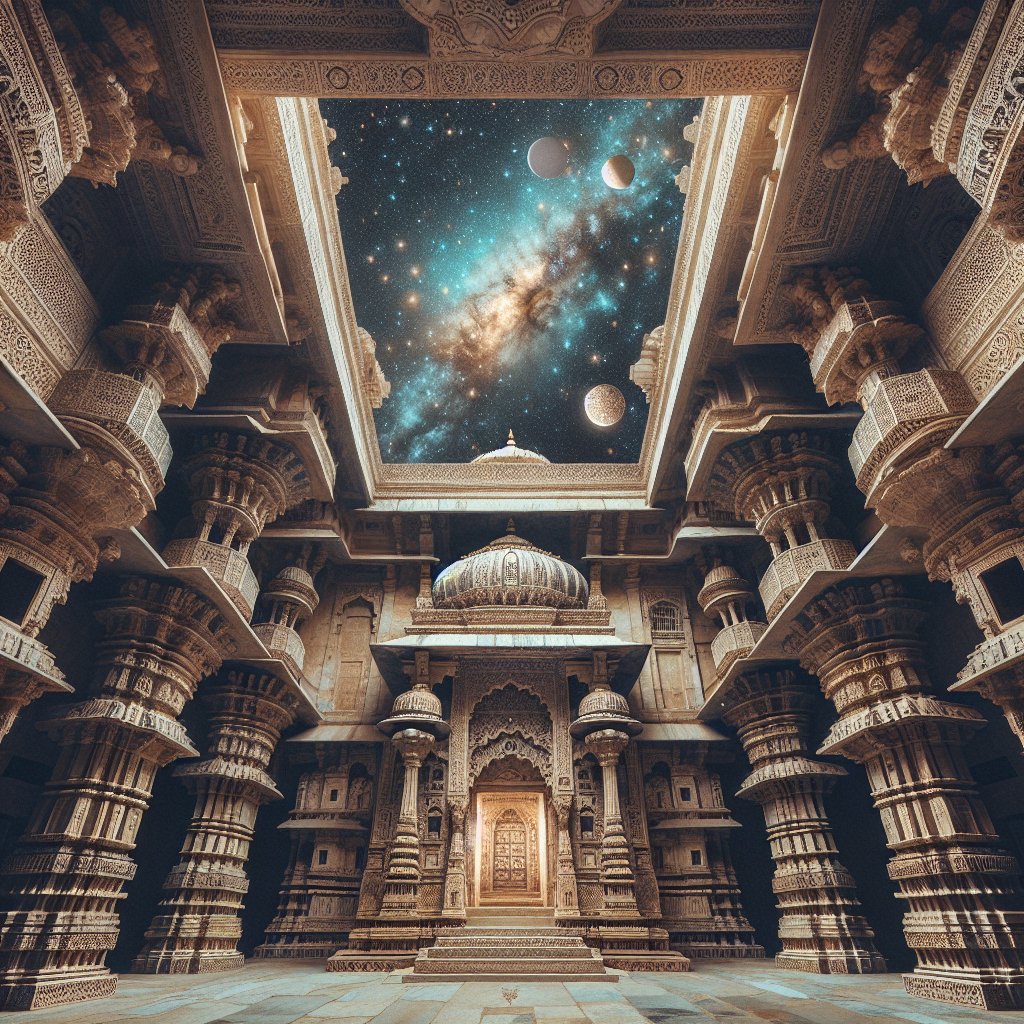Embark on a mesmerizing journey to the Jain Temples of Dilwara in Mount Abu, where architectural marvels await. These ancient temples, nestled in the serene hills of Mount Abu, capture the essence of India’s rich cultural heritage. As you explore these temples, you’ll be captivated by their intricate stone carvings, celestial ceilings, and breathtaking architecture that has stood the test of time. Get ready to be transported to a world of divine beauty and spirituality as we delve into the wonders of the Jain Temples of Dilwara.

Overview
Introduction to the Dilwara Jain Temples
Welcome to the world of Dilwara Jain Temples, architectural marvels located in Mount Abu, Rajasthan, India. Nestled amidst the lush green hills, these temples are a testament to the rich history, exquisite craftsmanship, and profound spirituality of the Jain community. Dilwara Jain Temples comprise a complex of five stunningly beautiful temples – Vimal Vasahi, Luna Vasahi, Pithalhar, Parshvanath, and Mahavir Swami. Each temple has its distinct charm and significance, attracting visitors from all around the world.
History and Significance of the Temples
The Dilwara Jain Temples hold immense historical and religious significance for the Jain community. Dating back to the 11th and 13th centuries, these temples were built under the patronage of the Solanki Dynasty, who were ardent supporters of Jainism. The intricate carvings, detailed sculptures, and awe-inspiring architecture of these temples reflect the devotion and craftsmanship of the artisans of that era. The temples are dedicated to various Jain Tirthankaras, and they serve as places of worship, meditation, and inspiration for Jain devotees.
Architecture
Influence of Solanki Dynasty
The architectural style of the Dilwara Jain Temples is deeply influenced by the Solanki Dynasty, known for their love for art and religious patronage. The temples exhibit a unique blend of Hindu and Jain architectural elements, showcasing the rich cultural heritage of Rajasthan. The Solankis played a crucial role in encouraging Jain artisans and craftsmen to create these magnificent structures, leaving an indelible mark on the history of Indian architecture.
Use of White Marble
One of the most distinguishing features of the Dilwara Jain Temples is the extensive use of white marble. The sheer brilliance and purity of the marble have amazed visitors for centuries. The marble is sourced from the nearby quarries, and its meticulous carving and polishing reflect the expertise and skill of the artisans. The white marble not only enhances the overall beauty and grandeur of the temples but also symbolizes purity and divinity in Jainism.
Intricate Carvings and Sculptures
Prepare to be mesmerized by the intricate carvings and sculptures adorning the Dilwara Jain Temples. Every inch of the temples’ interior and exterior is replete with breathtaking details, bringing to life various mythological stories, religious symbolism, and Jain teachings. The craftsmen have displayed their mastery over stone-carving by delicately chiseling out ornate patterns, floral motifs, intricate pillars, and beautiful domes. The sculptures of Tirthankaras, deities, and celestial beings exude a sense of ethereal beauty and divine grace.
Temple Layout and Design
The layout and design of the Dilwara Jain Temples are meticulously planned, showcasing the architectural brilliance of the craftsmen. As you step into the temple complex, you’ll be greeted by lush green gardens and serene surroundings, creating a peaceful ambiance for contemplation and spirituality. The temples are built following the Vastu Shastra principles, aligning them with cosmic energies and promoting harmony. Each temple is architecturally unique and offers a distinct spiritual experience, making the whole complex a pilgrimage site of remarkable allure.

Temple Complex
Vimal Vasahi Temple
Vimal Vasahi Temple is one of the oldest and most revered temples in the Dilwara complex. Built-in 1031 AD by Vimal Shah, a wealthy Jain merchant, this temple reflects the height of architectural excellence. Its stunning architecture, intricate carvings, and serene atmosphere make it a must-visit for any visitor. The temple houses a central courtyard, surrounded by beautifully decorated corridors and intricate marble statues. The sanctum sanctorum holds the idol of Lord Adinath, the first Tirthankara of Jainism, imbuing the temple with deep spiritual significance.
Luna Vasahi Temple
The Luna Vasahi Temple, dedicated to the 22nd Jain Tirthankara, Lord Neminath, is the largest and most famous temple in the Dilwara complex. This architectural masterpiece was built-in 1231 AD and continues to captivate visitors with its grandeur. The temple’s entrance, adorned with intricately carved marble pillars, leads to the central hall containing the main idol. The walls and ceilings of this hall are adorned with exquisite depictions of Jain mythology and celestial beings, narrating tales of spirituality and enlightenment.
Pithalhar Temple
The Pithalhar Temple, dedicated to Lord Rishabhdev, the first Tirthankara of this era, holds deep spiritual significance for Jain devotees. This temple, with its serene ambiance, provides a sacred setting for devotees to seek blessings and solace. The highlight of the temple is the magnificent idol of Lord Rishabhdev, intricately carved from a single block of white marble. The idol radiates a sense of divinity and tranquility, attracting scores of pilgrims throughout the year. The Pithalhar Temple is considered a sacred site for Jain pilgrims and offers a unique spiritual experience.
Parshvanath Temple
The Parshvanath Temple is dedicated to Lord Parshvanath, the 23rd Jain Tirthankara. This temple is renowned for its unique and exquisite architectural features. The entrance gate, known as ‘Rang Mandap,’ is a stunning example of intricate marble work, showcasing the finest craftsmanship of the artisans. As you progress further, you’ll come across beautifully carved pillars, ceilings, and walls depicting Jain mythology and stories. The temple’s sanctum houses a majestic idol of Lord Parshvanath, exuding a profound sense of spirituality and enlightenment.
Preservation and Conservation
Efforts to Preserve the Temples
The Dilwara Jain Temples, being historical and architectural gems, require constant efforts to preserve their grandeur for future generations. Preservation and conservation projects have been undertaken by the Indian government, religious organizations, and art enthusiasts to protect these invaluable treasures. Regular restoration work, including cleaning, repairing, and safeguarding the marble carvings, is carried out meticulously, ensuring the temples’ longevity.
Challenges in Maintaining the Architecture
Maintaining the ornate and delicate architecture of the Dilwara Jain Temples poses several challenges. Weather conditions, pollution, and natural degradation over time can affect the marble and intricate carvings. The preservation efforts require a delicate balance between restoration and retaining the authenticity of the temples. Skilled craftsmen and conservation experts work diligently to address these challenges and maintain the temples’ architectural integrity.
Importance of Heritage Conservation
The conservation of heritage sites like the Dilwara Jain Temples is of paramount importance. These temples not only symbolize the artistic and architectural achievements of the past but also serve as a source of cultural identity and pride for the Jain community and India as a whole. Heritage conservation ensures the continuity of rich traditions, artistic skills, and spiritual practices embodied in these temples, showcasing the country’s diverse heritage to the world.

Spiritual Significance
Jain Beliefs and Practices
Jainism is an ancient religion that emphasizes non-violence, truth, and spiritual liberation. The Dilwara Jain Temples hold immense spiritual significance for the Jain community as sacred places of worship and meditation. They provide a serene atmosphere for devotees to immerse themselves in prayer, contemplation, and a deep exploration of Jain principles.
Pilgrimage to Dilwara Temples
Embarking on a pilgrimage to the Dilwara Jain Temples is a spiritually enriching experience for followers of Jainism. It is believed that visiting these temples and seeking the blessings of the Tirthankaras can purify the soul, cleanse one’s karma, and lead to spiritual enlightenment. Pilgrims from all over the world flock to Mount Abu to witness the divine beauty of these temples and immerse themselves in the spiritual energy that permeates the surroundings.
Sacred Rituals and Ceremonies
Various sacred rituals and ceremonies are performed at the Dilwara Jain Temples as a part of Jain religious practices. These rituals include aarti (ritual of waving lamps), puja (offerings to deities), and abhishek (ritual bathing of the idol). Devotees participate in these ceremonies with utmost devotion, seeking blessings and expressing gratitude for the divine presence in their lives. These rituals add an aura of spirituality and create a unique spiritual ambience within the temples.
Visitor Information
Location and Accessibility
The Dilwara Jain Temples are located in Mount Abu, a popular hill station in Rajasthan, India. The town is well-connected by road, and buses and taxis can be availed from nearby cities like Udaipur and Ahmedabad. The nearest railway station is Abu Road, approximately 30 kilometers away, which is well-connected to major cities. Once in Mount Abu, the temples are easily accessible by local transportation or a short walk from the town center.
Entry Fees and Timings
Entry to the Dilwara Jain Temples is free for all visitors. The temples are open from morning until evening, allowing ample time for devotees and tourists to explore and experience their architectural splendor and spiritual ambiance. It is advisable to check the exact timings beforehand as they may vary during festivals and special occasions.
Guidelines for Visitors
Visitors are expected to maintain the sanctity and tranquility of the temples while exploring the premises. It is advised to dress modestly and respectfully, covering the shoulders and knees, to honor the religious sentiments associated with the temples. Photography may be restricted in certain areas to protect the delicate carvings and sculptures. Smoking, eating, and loud conversations are discouraged within the temple complex to preserve the serene atmosphere for devotees and spiritual seekers.
Embark on a soul-stirring journey to the Dilwara Jain Temples and witness the divine splendor of these architectural marvels. Immerse yourself in the rich history, exquisite craftsmanship, and profound spirituality that these temples offer. Experience the peace and tranquility that envelopes this sacred space and let the grandeur of the Dilwara Jain Temples leave an indelible mark on your heart and soul.
